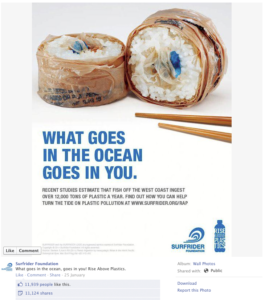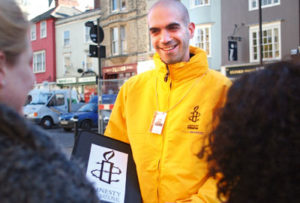A good supporter journey that continually communicates and engages people in an organization’s vision and goals is every campaigner’s desired outcome. But achieving these results is challenging, from people’s interests subsiding to encouraging online to offline action.
Greenpeace’s Hong Kong office recently focused on supporter journey planning for the Save the Arctic campaign, resulting in increased fundraising, new monthly supporters and more than double its usual petition signatures.
Here are some highlights of what they learned:
Speak to Target Audience’s Values:
Carson Luk, digital fundraising specialist for Greenpeace East Asia (which represents the organization in Hong Kong, China Mainland, Taiwan and Korea), says the campaign defined its target audience as women, young people and celebrity lovers. Knowing a high degree of its audience is influenced by stars, Greenpeace East Asia partnered with East Asian celebrities like Hong Kong designer Chocolate Rain, Discovery Channel Fun Taiwan host Janet Hsieh and singer Kay Tse On Kei, who are supportive of Greenpeace to share the Save the Arctic message.
More than 15 stars were featured in the campaign, advertising Greenpeace’s message on multiple platforms, including a splash home page for Greenpeace East Asia, a YouTube video receiving 15,000 views, and Google and Facebook ads.
While past petitions in Hong Kong are likely to net 1,000-2,000 supporters, this Save the Arctic petition garnered 5,000 signatures. Of the people who joined the Save the Arctic campaign, 3.6 per cent gave a one-time donation and 1.2 per cent became monthly Greenpeace donors.
Go Beyond E-mail:
As e-mail inboxes continue to balloon, open rates for e-mails are declining. Carson says the Save the Arctic’s supporter journey leveraged Facebook to attract new supporters, posting daily four-by-six inch Facebook images from the arctic.
The team also created banner ads for display through content network, which worked well compared to keyword contextual ads.
Facebook ads featuring stars sharing the campaign’s message, which amounted to 20 euro cents per page like, worked extremely well, as users were likely to share the campaign with their friends, resulting in hundreds of more people learning about the need to save the arctic.
Greenpeace East Asia also leveraged their celebrity partner platforms, asking them to highlight the campaign on their sites.
Continuous Communication:
Every seven days, the Greenpeace Hong Kong office sent a new e-mail to its supporters, communicating updates and news on the campaign. Weekly e-mails educated supporters on the issue, with facts and background information, while every second week, supporters would receive updates on the campaign.
Carson says constant communication keeps a campaign front and center in supporters’ consciousness, resulting in a more engaged network.
This is the first time the Hong Kong office has created a supporter journey for a specific campaign, and Carson says it’s an model they plan to continue testing in future campaigns.
Lessons learned from the Save the Arctic supporter journey will be applied to Greenpeace’s current campaign, Detox, which is calling on major clothing companies like Zara, United Colors of Benetton, Calvin Klein and Levi’s to adopt a credible, individual and public commitment to phase out the use and release of all toxic chemicals. Update: Zara has committed to ‘toxic detox’ following social media pressure from Greenpeace.
Stay Connected: www.facebook.com/greenpeace.china
Related Story:
Campaigners in China: social media plays critical role in social action (VIDEO)
Do you have an innovation in mobilisation and people-powered campaigns? Share it with Mob Lab by contacting moblab@greenpeace.org.
Categories:
organising, mobilising and engagement



